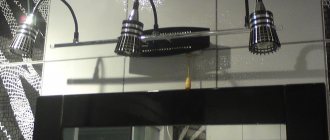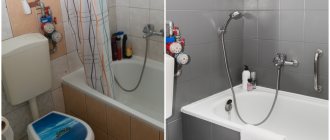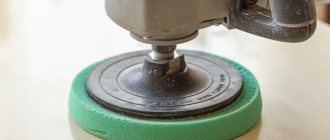Choosing the right roller for water-based paint is the key to quality repairs. Often insufficient attention is paid to this; many people believe that any tool can be used for the job, but this is a misconception. For each coloring composition, there are the most suitable devices that provide the desired result. A mistake in choosing can lead to everything having to be redone.
Which roller is better to choose?
Rollers are great for working with water-based and acrylic paints. They are often used for interior painting. Rollers come in different coverings and sizes. Knowing all their features, you can decide which roller is best to paint the walls with.
The most popular rollers are foam rubber. This material wears out quickly, but is inexpensive. It is better to take fur or velor rollers for oil compositions or enamels. These polyamide and thread tools have proven themselves to be quite good. For deep relief and creating the necessary texture on the surface, it is better to choose a roller with long pile.
The rollers are durable, easy to clean and after use they can be stored until the next repair. By size they are divided into large, medium and small. Professionals work first, medium ones are convenient for painting walls at home, small ones are used for painting around baseboards, jambs, and windows.
Device Features
Structurally, the rollers consist of two elements - the machine and the working surface - a cylindrical coat. The machine includes a yoke and a handle. The handles are made of wood or plastic; they have a comfortable shape and fit well in the hand. There is no specific standard for making a handle; each model of wall paint roller has its own handle. When choosing a tool, it is important to consider that its weight and size are combined, the handle should lie comfortably in the hand, and the working area should not be heavier than the handle, otherwise it will be difficult to work and the hand will get tired quickly.
The rollers have different attachment attachments; the roller can be secured in three ways:
- hard. In this case, the instrument is not dismountable; when the coat wears out, the device will have to be thrown away;
- with coupling. When the working area wears out, it can be easily replaced with a new coat;
- frame system - such a tool can be used repeatedly, it does not have a core.
One or another mounting option can be chosen based on personal preferences. In addition to the fact that the rollers differ from each other in the type of handle and the method of attaching the attachment, the coats or working areas of these tools are made of different materials.
Recommendations before painting walls
Considering the tips below will improve your technique of working with a roller, which will affect the quality of the repair:
- The estimated area for cladding must be measured in order to know the required amount of material. A large assortment of water-based and acrylic paints in the retail chain will help you decide on a color. Their consumption is always indicated on the jar label, and the drying time is also indicated there.
- After painting, it is worth purchasing a primer, putty (deep penetration, starting, finishing), sandpaper, masking tape, and plastic film.
- You will also need additional tools - a bucket, brush, gloves.
- The surface that is going to be painted must be carefully prepared. Old layers of paint and wallpaper are removed with a scraper. After the surface is degreased, cracks and chips are sealed with putty.
- Using an emery block, rough edges are removed (sanding walls), and any dust that appears is removed with a damp cloth.
- To ensure strong adhesion of the paint to the base, the entire prepared surface is treated with several layers of acrylic primer. As a result, the painting will be smooth and durable.
- Each subsequent layer of primer is applied only after the previous one has completely dried.
- The paint is diluted according to the instructions on the can. The emulsion is poured into a tray and you can begin painting after putting on glasses.
Such recommendations will be useful to those who want to know how to properly paint walls with a roller.
Types of fur coats
The cheapest option is painting rollers with a foam rubber coat. They can be used to apply water-based paints. The tool can be used for priming and wallpapering. As for emulsion compositions, such a roller will not work. Foam rubber products are not recommended for painting the ceiling, since the applied layer will be uneven. The only advantage of a foam roller is its low cost. Disadvantages include the formation of a large amount of splashes during operation and a short service life.
- Mini. In this case, we are talking about a cylinder with a diameter of no more than 9 cm and a maximum height of 15 cm. Most often, the products are used for finishing hard-to-reach surfaces or coverings with a small area.
- Midi. The diameter remains the same - 9 cm, and the height is slightly larger - up to 20 cm. Such tools are considered universal and are recommended for finishing at home. With their help, you can quickly paint walls, despite the fact that the rollers themselves weigh little.
- Maxi. As the name implies, such products are distinguished by their large dimensions. Their length reaches 30 cm, and their diameter is 8 cm. This type of roller is a professional tool, so the cost is appropriate. Most often the product is used for facade work.
- For interior work. They are small, lightweight products.
- Facade. They are large in size and equipped with a bearing that stops the roller if the speed is too high.
- Textured. They can be made of various materials: rubber, plastic, metal, fur and so on. With its help, relief patterns are created when using decorative plasters.
- Clamping. These are rubber products that are used to apply adhesive compounds to the surface and remove air bubbles from under the wallpaper.
- Needle-shaped. Used for perforating drywall and removing old wallpaper.
- Paneled. Used for decorative painting without using a stencil. Today, such a tool is almost impossible to find.
Roller technology
To get a perfectly smooth and neatly painted surface, you need the correct technique for working with a roller. It has characteristic features:
- Painting boundaries are marked with masking tape. It must be at the same level, which is checked with a spirit or laser level. When gluing the tape, it is advisable to press it for a tight fit to avoid water-based paint getting under it. The height, shape, size and location of the tape can be any - vertical, horizontal, high or low. It depends on the intended interior and the taste of the owner. The tape is removed when the coating is completely dry.
- The roller should not be completely immersed in the paint; the axis of the tool must remain dry. Several twisting movements are made on the ribbed wall of the pallet to evenly distribute the paint throughout the masking tape, which can be removed, washed and stored upon completion of the repair.
- The movements of the roller should resemble the letter W, that is, up and down, if horizontally, then from left to right, with a brush in some narrow places crosswise. Vertical movements in one direction leave marks. Knowing how to paint walls with a roller without streaks, you can get the perfect result.
- The sequence of work is to paint the ceiling first, then the walls. Usually start from a corner or doorway. A small roller is used here
- You shouldn’t apply a lot of paint in one stroke; smudges and drops should be rolled out. Often one layer of water-based paint is not enough. They are applied at least two, and each subsequent one when the previous one is completely dry.
- If the strokes are uneven, the roller is renewed.
- If it is not possible to remove the furniture, it is moved to the middle of the room, covered with covers or film, which is secured with masking tape. The same is done with doors and windows. Water-based paint drips from such surfaces are difficult to remove.
- For high-quality painting near electrical wiring, the power must be turned off, and the sockets must be protected with the same tape.
- After completing the painting of the walls, all switches and sockets that were dismantled at the beginning of the work are installed in their places, the floor is cleaned, and covers are removed from the furniture.
You should not delay working with a roller and water-based paint. Water, absorbed into the surface, evaporates quickly.
Before you start painting, you should put on clothes that you won’t mind throwing away afterwards. This knowledge can be useful when using paints with oil, enamel and other compositions, because the basic principles of working with a roller are the same.
Nuances of choice
Due to the fact that painting with water-based composition is becoming increasingly popular, obtaining the desired result will depend on the tool.
When choosing a roller in a store, you need to pay attention to the following factors:
- Quality. Elements must be free of defects and well secured.
- Deformation level. When compressed, the fur coat must restore its shape, otherwise painting will be difficult.
- The seam. The pad should not have a pronounced, tangible joint.
- Nap coating. Hair should not fall out.
- Convenience. When working without attachments, the handle should provide a comfortable grip.
Taking into account simple factors will ensure that you purchase a reliable tool.
Instrument care
For long-term further use, you should carefully monitor the tool.
For this purpose, the following materials are prepared:
For each roller you should prepare a bucket of warm water. Add a couple cups of softener to each and mix until smooth.
You can clean the roller with water or dishwashing liquid. Before cleaning, the remaining paint on the roller is rolled out onto newspapers if you place an improvised canvas on the floor.
The sequence of actions is as follows:
If work was carried out with oil paint, alcohol or turpentine should be used. These are aggressive substances that can cope with even severe pollution.
After cleaning, the roller is hung on a nail or hook to dry. If this is not done, the roller pile will most likely lose its original shape and become unsuitable for use. When the instrument is dry, it is covered with aluminum foil or plastic film to protect it from dirt and dust.
If repairs are temporarily forced to stop, the roller should be placed in a plastic bag and placed in the refrigerator. This will preserve the quality of the instrument. However, when storing at low temperatures, it may be necessary to defrost the roller first.
Painting with a roller is a complex and time-consuming stage of repair. However, with a competent approach, the result will be pleasing to the eye, and the costs are not so high compared to the purchase of other finishing materials. The main thing is to follow the technology and not skip the preparatory stages. Painted surfaces will create an atmosphere of warmth and comfort in a residential space, as well as rigor and conciseness in an office building.
Source
Ceiling preparation
To repair a ceiling, you must first identify all its shortcomings and understand how to work with it. One of the most common situations has the following signs: the plaster has crumbled abundantly, there are noticeable darkenings in the corners, and the ceiling itself has practically no differences in height.
In this case, preparing the ceiling for painting will consist of the following steps:
- First you need to remove the old coating. If the ceiling was previously covered with whitewash or plaster, then the ceiling will need to be cleaned. To do this, the ceiling is moistened with water and left in this state for some time.
- When all the water has been absorbed into the coating, you need to scrape it off with a metal spatula. The need for preliminary wetting with water is due to the fact that in this case the coating peels off from the concrete floor much more easily. In the case of wallpaper, the technology will look the same, but you will have to remove not only the wallpaper, but also the glue that held it in place.
- If the ceiling was previously covered with a water-based composition, then not only water will be required, but also wind - the room will need to be exposed to a draft after wetting the ceiling. The combination of water and air will swell the emulsion, making it much easier to clean up. An alkaline solution with soda is best suited for rinsing.
- After cleaning the ceiling, you can proceed to the next stage of work - applying a primer with an antiseptic. Today, there are many variations of primer compositions - for example, some of them contain chlorine, which is an excellent antiseptic. However, such compositions do not fully perform their functions for long. When choosing a primer, you must make sure that it is compatible with the paint used to cover the ceiling.
- When the base layer of primer has dried, you need to cover it with a primer - a polymer primer that improves the quality of the coating. The standard technology for this stage consists of applying the first layer of starting putty, sanding, another layer of starting solution, finishing putty and final sanding, during which you need to level the surface of the ceiling to a perfectly smooth state.
Having completed the preparation of the ceiling, you can begin painting it with water-based paint.
Natural drum upholstery
Sheepskin is used as a natural fur coat. This upholstery is the best choice for working with surfaces of any complexity. All types of paints are well retained on sheepskin, which allows for high-quality work with minimal consumption. Another advantage of natural fur coat is its long service life. When painting a ceiling with water-based or acrylic paint, a sheepskin coat will be the best choice.











